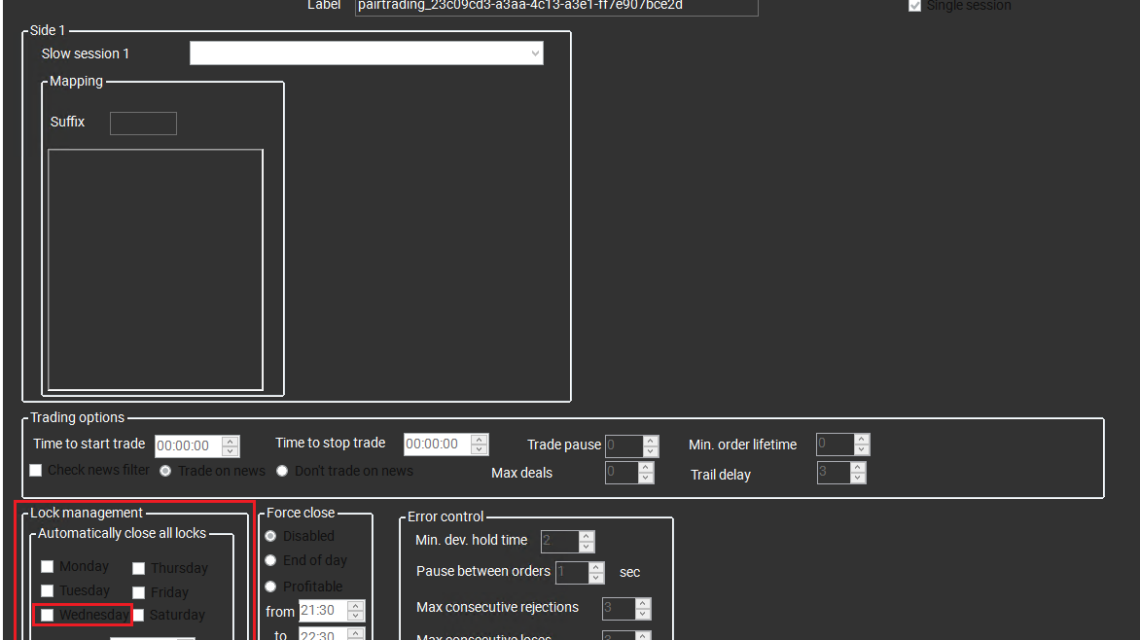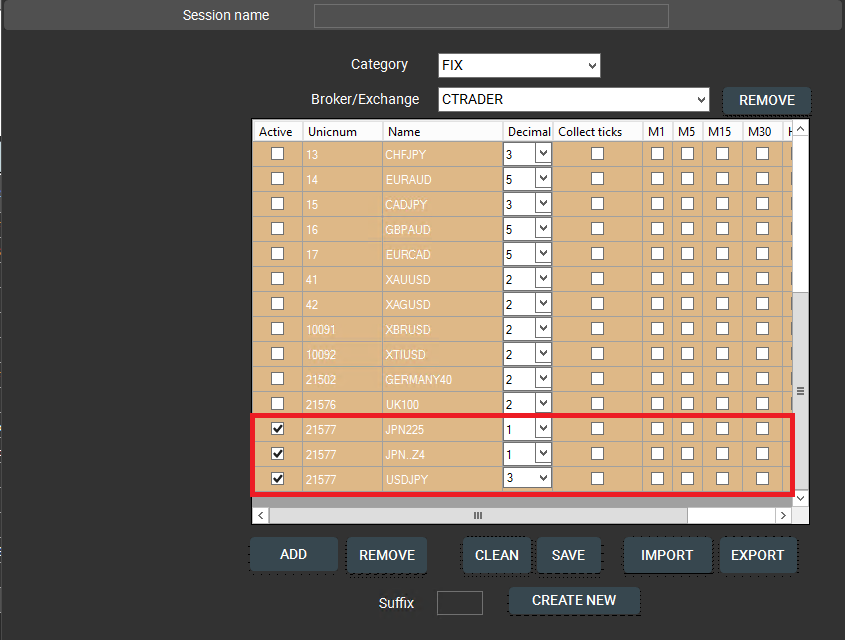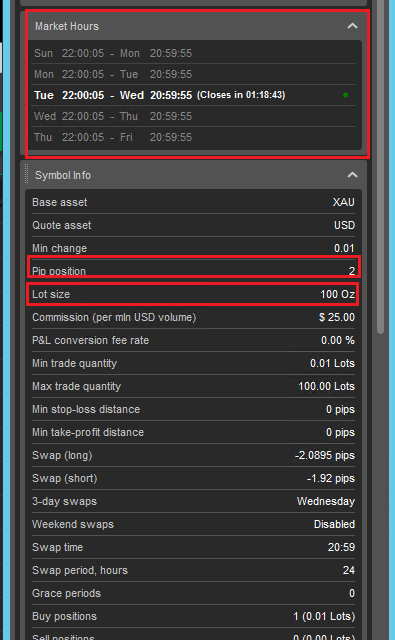Pairs Trading Setup for Futures vs. Spot Trading Friday October 4th, 2024 – Posted in: Arbitrage Software, Forex trading – Tags: forex trading, futures trading, pairs trading, pairs trading software, pairs trading strategy, sharptrader, statistical arbitrage
Overview:
- Key Advantages of the Pairs Trading Arbitrage Strategy with Futures vs. Spot Instruments
- Obtaining Trading Instrument Specifications
- Setting up Symbols in SharpTrader Connectors
- Strategy Setup Parameters
- Conclusion
- F.A.Q.
Key Advantages of Using the Pairs Trading Strategy with Futures vs. Spot Instruments
- Reduced Market Risk: By trading highly correlated assets such as futures and spot instruments, you can hedge your positions and mitigate the effects of market volatility.
- Arbitrage Opportunities: Futures and spot prices often differ due to market inefficiencies. The Pairs Trading arbitrage strategy allows you to profit from these discrepancies and take advantage of mispricing.
- Leverage Benefits: Futures typically offer higher leverage than spot instruments, enabling you to amplify potential profits while maintaining balanced risk through the strategy’s hedged nature.
- Lower Transaction Costs: Trading futures can involve lower transaction costs, especially with larger contract sizes, making the strategy more cost-effective.
- Diversification of Trading Portfolio: Holding positions in both futures and spot markets diversifies your exposure and reduces the overall risk of relying on a single market.
- Capital Efficiency: Futures contracts usually require lower initial margins than holding spot positions, making them a more capital-efficient way to hedge or speculate.
- Trading Flexibility: You can adjust your positions based on market conditions—using futures for short-term gains and spot instruments for longer-term holds.
- Minimized Currency Risk: Futures contracts are standardized in terms of contract sizes and currencies, reducing exchange rate risks compared to spot trading.
This combination of Pairs Trading with futures and spot instruments offers a robust approach to balancing risk and reward while capitalizing on market inefficiencies.
How to Set Up the Pairs Trading Arbitrage Strategy in SharpTrader for Futures vs. Spot Trading
SharpTrader Connector Setup
To begin, it’s important to verify the specifications of each trading instrument to configure your session properly:
- Symbol Name
- Number of Decimal Places
- Contract Size
- Tick Value
- Trading Hours
You can obtain this information from your broker by requesting instrument specifications or checking your trading platform directly.
For example, in cTrader, suppose we are trading the JPN225 index vs. JPN225 future.
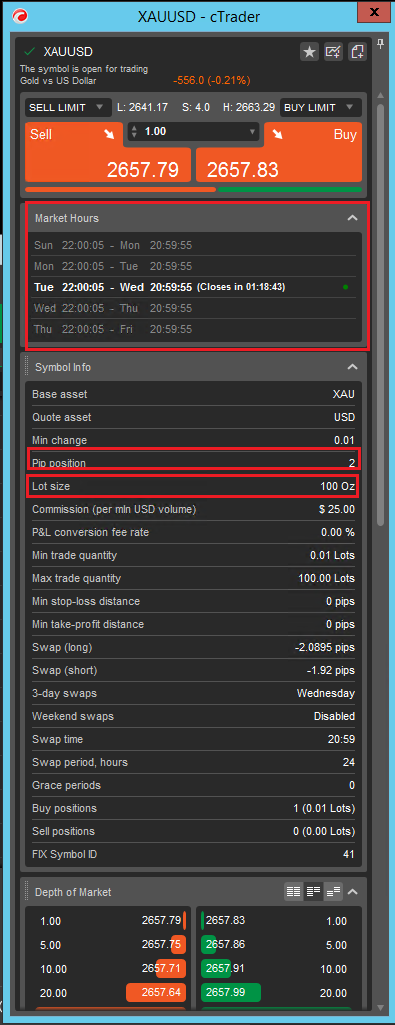
Here’s a sample specification for these instruments:

You’ll also need to adjust the Trading Time based on your VPS and broker server times. For example, if your VPS is in UTC (GMT=0) and your broker operates in GMT+3, you’ll adjust the trading time to 00:00–21:00.
Trading Symbols Setup in SharpTrader:
Add the symbols in the session settings under the Symbols tab in the SharpTrader arbitrage platform. Let’s take Japan Stock Market Index (JPN225) vs. its future (JPN225.Z4) and add USDJPY as well. To ensure correct profit calculations, you must add the base currency of the index or future—in this case, JPY for the JPN225.
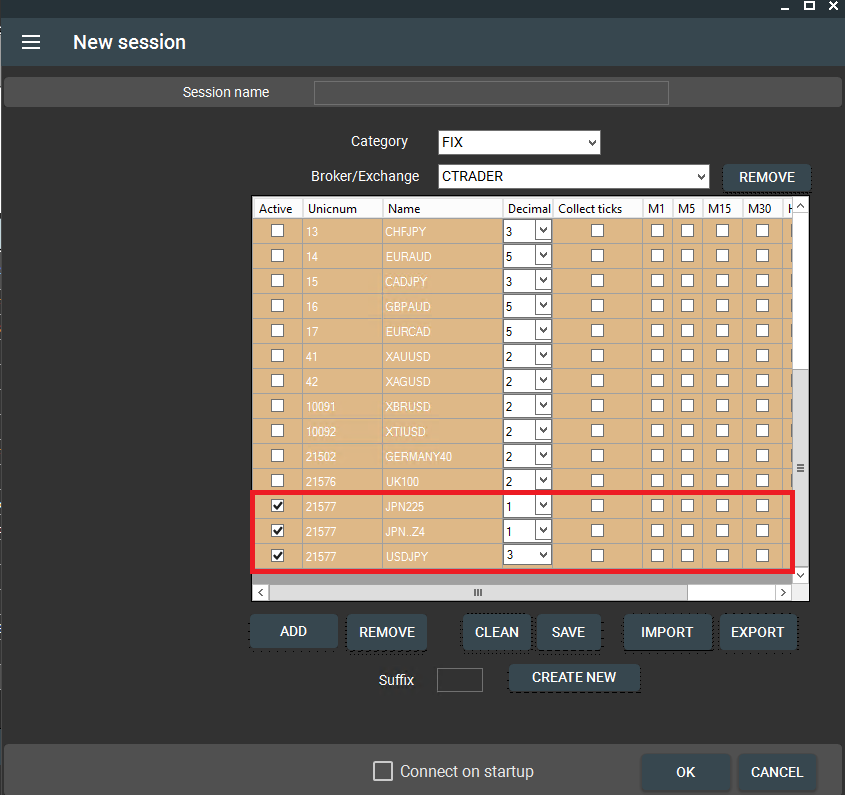
In the Session Settings Indices tab, input the Lot Multiplier according to the Contract Size, and choose the appropriate Base Currency.
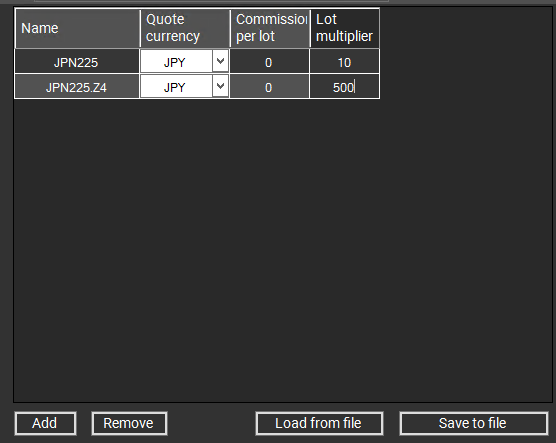
If using two accounts, configure sessions for each one accordingly.
SharpTrader Pairs Trading Strategy Setup
In the Settings tab, I recommend disabling Lock Management on Wednesdays. This is typically used to avoid triple swaps for lock strategies. However, for Pairs Trading arbitrage, the loss from closed locks could exceed the cost of a triple swap for indices.
Next, add the symbols in the strategy table using the same names from the session settings.
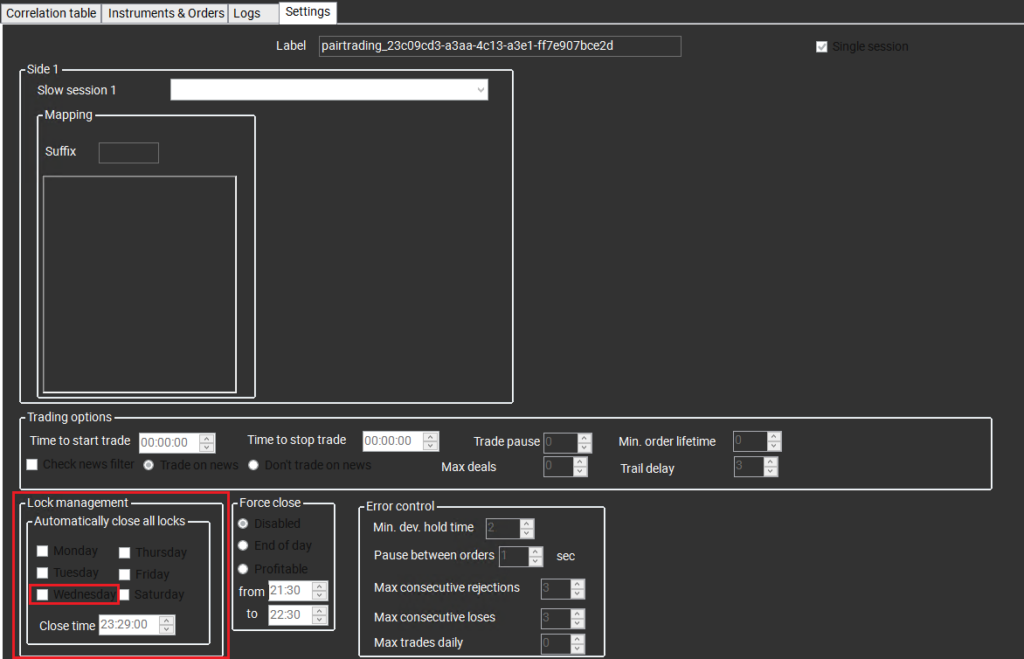
Lot Calculation:
When calculating lot sizes, consider the Contract Size and Tick Value. Start using demo accounts to manually open locks and verify that the prices move in sync for both correlated instruments on every tick. Ensure that your Stop Loss (SL) is wide enough to prevent premature closure in case of large divergences. Test your setup on demo accounts for at least a week to identify potential issues before transitioning to live accounts.

You can use our preset values for initial settings. If you increase the lot size accordingly, remember to scale up SL, TP, Min Profit, Trail Distance, and Trail Step by a factor of 10, 100, etc. Consider using the same pair with different Z-Index values (e.g., 2, 2.5, 2.8) to capture more profit from larger divergences, though this increases risk.
Video – How to setup Pairs Trading strategy for Spots vs Futures Arbitrage Trading
F.A.Q.
Q: Can I use the Pairs Trading arbitrage strategy on one account?
A: Yes, you can, provided that your broker offers both indices and spot instruments for the same underlying assets and doesn’t smooth out price differences between them. If the strategy doesn’t detect divergences between the future and the index for an extended period, consider switching brokers or setting up the strategy across two brokers.
Q: Can I trade correlated currencies (e.g., EURCAD vs. USDCAD) or correlated indices (e.g., DE40 vs. FR40)?
A: Yes, you can, but this setup typically carries higher risk. However, lower-risk results can be achieved with pairs such as BRENT vs. WTI, which tend to show better correlations in terms of risk control.
Q: How do I calculate the correct lot size for Pairs Trading arbitrage?
A: The lot size should be calculated based on the Contract Size and Tick Value of the instruments you’re trading. We recommend starting with demo accounts to manually open and verify that prices move similarly for both correlated instruments in the pair with each tick.
Q: What is the best time to trade using the Pairs Trading strategy?
A: The best time to trade depends on the liquidity and volatility of the instruments. Generally, during high trading volumes in major market sessions (e.g., London, New York) is ideal. Additionally, monitoring significant economic events can help to find arbitrage opportunities.
Q: Can I adjust the Z-Index to trade multiple times with the same pair?
A: Yes, you can use different Z-Index values for the same pair, for example 2, 2.5, and 2.8, to capture more profit during larger divergences. However, doing so increases the risk, so we recommend testing this approach on demo accounts first to find the optimal setup.
Q: What should I do if my broker doesn’t support both futures and spot instruments?
A: If your broker doesn’t support both futures and spot instruments for the same asset, you can switch to a broker offering both or configure your strategy to trade between two separate brokers, one for futures and one for spot.
Q. Please explain “direction” parameter for orders opening.
A. Video “Understanding the “Direction” Parameter in Pair Trading: Z-Index vs. Price-Based Explained”
Conclusion:
The Pairs Trading strategy for futures vs. spot instruments offers a unique and powerful approach to reducing risk while capitalizing on market inefficiencies. Proper configuring allows traders to hedge positions effectively, take advantage of arbitrage opportunities, and maximize capital efficiency. Before using this strategy in live markets, be sure to test thoroughly on demo accounts and make the necessary adjustments to suit your trading style and risk tolerance.
If you want the optimized set for futures vs. spot trading, please contact us. If you do not yet own the strategy, we will offer you a special discount to get started.
 Deutsch
Deutsch 日本語
日本語 العربية
العربية 한국어
한국어 Español
Español Português
Português Indonesia
Indonesia Tiếng Việt
Tiếng Việt 中文
中文



